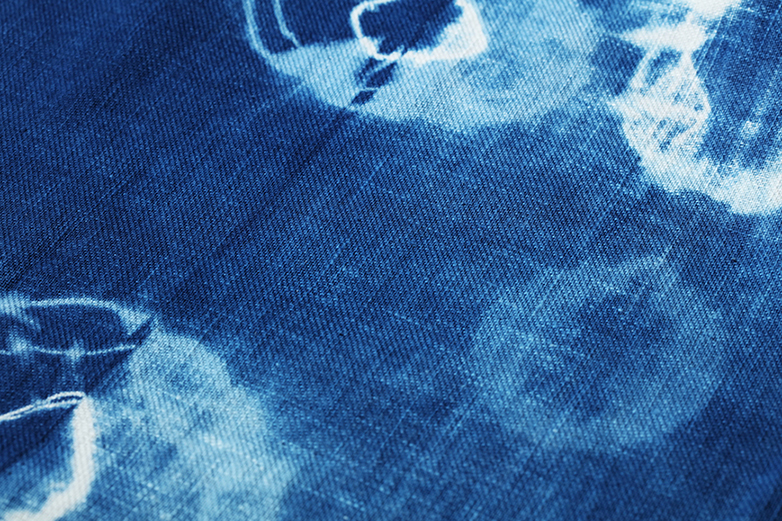When people think of Japanese color, one often imagines cherry blossom pink or vermilion torii gates—but there is another hue that runs deep through Japan’s history: Aizome (藍染), the art of indigo dyeing. Known internationally as “Japan Blue,” this centuries-old craft represents purity, perseverance, and quiet strength. From samurai garments to modern fashion design, aizome continues to dye Japan’s cultural fabric with elegance and depth.
Origins of Indigo: From Nature to Craft
The story of aizome begins with the ai plant (Persicaria tinctoria), a leafy herb cultivated across Japan’s temperate regions since the Nara period (8th century). The process of transforming these green leaves into a rich blue dye is complex and alchemical: leaves are fermented to create sukumo, mixed with lye and natural ash to form the dye vat, and carefully maintained to achieve perfect balance. Craftsmen call this “bringing the vat to life,” as the dye’s success depends on living microorganisms—a subtle dance between chemistry and nature.
By the Edo period, aizome had become an essential part of Japanese daily life. Indigo’s antibacterial properties made it ideal for work clothes, kimono linings, and even baby garments. Its deep, cooling shade also suited Japan’s humid summers. Over time, indigo evolved from practical necessity to aesthetic expression, finding its way into textiles, paper, and even woodcrafts.
Symbolism and Aesthetic: The Meaning of Japan Blue
Aizome’s enduring beauty lies in its simplicity. The color itself—somewhere between ocean depth and twilight sky—embodies tranquility and endurance. In Japanese aesthetics, it represents purity (seijō), sincerity (makoto), and natural harmony (wa). Samurai once wore indigo-dyed cloth under their armor, believing the color symbolized both protection and inner calm.
The indigo spectrum includes shades with poetic names like kachi-iro (“victory blue”) and ai-zome-gasane (“layered indigo”). Each hue carries subtle meaning: light blues evoke freshness and beginnings, while deep tones suggest maturity and quiet dignity. The more the fabric is washed and worn, the more beautiful it becomes—a reflection of wabi-sabi, the Japanese philosophy that finds grace in impermanence and use.
The Craft Today: Reviving Tradition in Modern Design
Though the introduction of synthetic dyes in the 20th century once threatened aizome’s survival, today a growing number of artisans are reviving the craft. In regions such as Tokushima, Aichi, and Ibaraki, traditional dyers continue to use natural indigo vats, passing down centuries of knowledge. Workshops and studios now welcome visitors to try aizome firsthand—dipping cloth into dark blue vats and watching it emerge green, then slowly turning blue as it meets the air, a small miracle of transformation.
Contemporary designers have also embraced indigo as a sustainable alternative to chemical dyes. Japanese fashion brands like Blue Blue Japan and Kapital incorporate aizome into denim, scarves, and interior design, celebrating the color’s organic beauty. Even beyond fashion, architects and product designers draw inspiration from indigo’s depth and serenity, calling it “a color that breathes.”
The Spirit of Indigo: Continuity and Calm
Aizome is more than just dye—it is a living connection between past and present, nature and human craft. The patient rhythm of stirring a dye vat, the scent of fermentation, and the slow deepening of color embody a uniquely Japanese approach to artistry: one rooted in observation, respect, and time.
For visitors or students of Japanese culture, experiencing aizome is to witness craftsmanship in its purest form—where tradition is not frozen in time but flows, like the indigo water itself, into new expressions. Whether in the folds of a kimono, the threads of denim, or the brushstrokes of modern design, Japan Blue continues to color the world with quiet brilliance.











